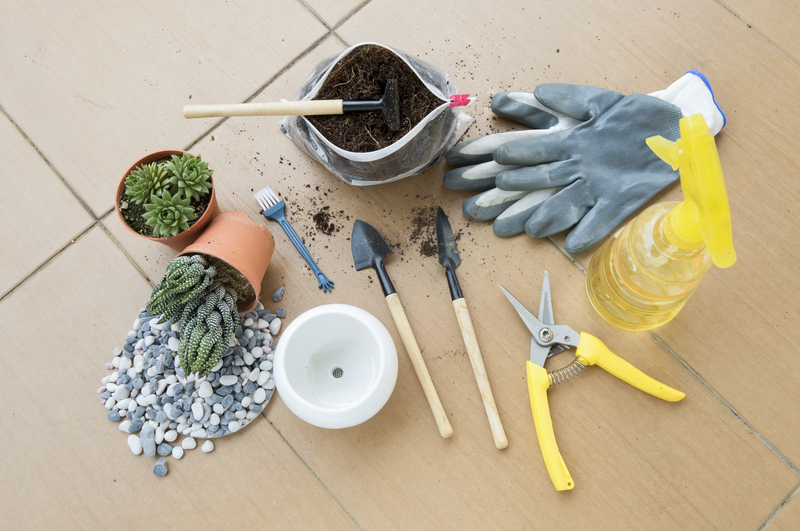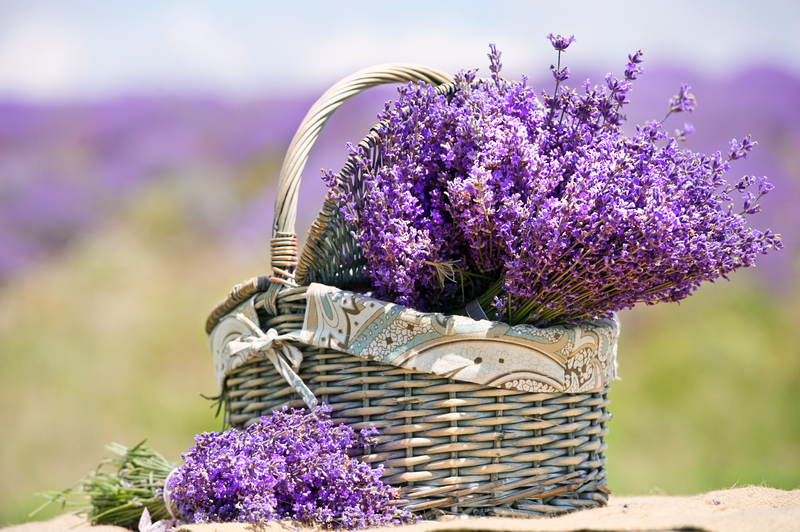Gardening on a Budget: 5 Low Maintenance Tips
Posted on 25/09/2025
Gardening on a Budget: 5 Low Maintenance Tips
Are you dreaming of a lush, vibrant garden but concerned about the costs and upkeep? Gardening on a budget is entirely possible--even for beginners or those without much time. With a few money-saving tricks and a smart approach, you can enjoy a beautiful outdoor space that requires little effort and minimal spending. This comprehensive guide will walk you through five essential, low maintenance gardening tips for creating a wallet-friendly, easy-to-manage garden. Stay with us as we reveal practical strategies and expert insights!

Why Opt for Budget-Friendly, Low Maintenance Gardening?
The idea of a thriving garden often conjures up visions of weekly chores, pricey plants, and big investments in soil and fertilizer. However, gardening on a budget doesn't mean sacrificing beauty or variety. Whether you have a sprawling yard, a small patio, or even just containers on your balcony, choosing low-cost and low-effort strategies helps you:
- Save money on plants, tools, and water bills
- Reduce your time spent on maintenance
- Promote sustainability and biodiversity
- Grow your own produce for added savings
- Enjoy gardening as a stress-free, rewarding hobby
Ready to dig in? Here are our top five simple and affordable low maintenance gardening tips you can start using today.
1. Choose the Right Plants for Effortless Success
Native and Drought-Tolerant Plants
Start your budget-friendly gardening journey by selecting native or drought-tolerant plants. These species are adapted to your local climate, requiring less water, minimal fertilization, and are naturally more resistant to pests and diseases.
- Native plants: Check with your local garden center for a list of species native to your region--they're often cheaper, thrive with little help, and support local wildlife.
- Drought-tolerant plants: For sunny, dry areas, consider succulents, lavender, sedum, yarrow, and ornamental grasses. These need less irrigation and survive well with minimal attention.
Expert Tip: Mix perennials and self-seeding annuals for a garden that comes back year after year, saving you money on replanting.
Hardy Edibles
Budget-conscious gardening doesn't mean you can't enjoy homegrown food. Opt for easy-care vegetables and herbs such as:
- Lettuce, kale, Swiss chard
- Radishes and carrots
- Chives, mint, oregano, and thyme
These plants tend to thrive with little fuss and can be harvested continuously, giving you more value for your effort.
2. Make Your Own Compost and Mulch
Homemade Compost
Instead of buying expensive soil amendments, start a compost pile using kitchen scraps and yard waste. Compost enriches the soil, reduces your landfill contribution, and helps retain moisture--perfect for low maintenance gardening. Here's how to get started:
- Select a location for your compost bin or pile (even small yards can accommodate a compact bin).
- Add green material (fruit and vegetable peels, coffee grounds) and brown material (dry leaves, cardboard, shredded newspapers).
- Turn your pile occasionally and keep it moist, not soggy.
Pro Tip: Finished compost can be used to top-dress plants and enrich new planting beds for free!
DIY Mulch
Mulching helps retain soil moisture, suppress weeds, and moderate soil temperature--all crucial for low-effort gardening. Instead of buying mulch bags, use:
- Dried grass clippings and leaves
- Shredded cardboard or newspaper
- Wood chips from local tree trimming companies
Lay mulch around your plants, being careful not to pile it against stems.
3. Water Wisely and Efficiently
Smart Irrigation Saves Money
Overwatering wastes a precious resource and can hurt your plants' health. To keep gardening costs (and maintenance) down, develop water-smart habits:
- Water in the morning or evening to minimize evaporation.
- Deep-soak less often rather than sprinkling daily for better root growth.
- Use soaker hoses or drip irrigation--easy to DIY and available at low cost. By delivering water right to plant roots, you'll use less overall.
- Group plants with similar water needs together to prevent over- or underwatering.
Harvest Rainwater
Consider setting up a simple rain barrel system under your downspout to collect water for your garden. Many municipalities offer rebates or programs for rain barrels, making this an inexpensive upgrade that pays off over time.
4. Repurpose and Upcycle for Frugal Gardening
There's no need to splurge on fancy planters and garden decor. Creative reuse is a cornerstone of budget gardening. Here's how you can give new life to everyday items:
- Containers: Use buckets, old boots, bathtubs, colanders, or tin cans with drainage holes. They make quirky and functional planters.
- Trellises and supports: Construct supports for beans and tomatoes with salvaged wood, bamboo canes, or old ladders.
- Decor: Incorporate colorful glass bottles, broken pottery, or painted rocks as garden art.
Not only does upcycling save money--it also reduces waste and personalizes your garden space with character and charm.
5. Keep it Simple: Limit Garden Size and Complexity
Small Spaces, Big Impact
It's tempting to plant everything at once, but a larger garden means more work and greater expense. Instead, start small and focus on manageable spaces:
- Begin with a few raised beds or containers--easier to weed and water efficiently.
- Create a garden "room" or focal point with a cluster of plants or simple paths for maximum effect (and minimal effort).
- Expand only as you gain confidence and see what thrives in your individual environment.
Low Maintenance Design Tips
- Plant in blocks or groupings: This crowds out weeds and looks tidy with less maintenance.
- Use ground covers like creeping thyme, ajuga, or sedum to fill gaps and reduce bare soil.
- Choose large, statement plants or shrubs that provide visual interest year-round with little need for pruning.
Bonus: More Budget Gardening Hacks
- Swap seeds or plants with neighbors, local gardening groups, or online communities.
- Start plants from kitchen scraps--regrow scallions, celery, or potato eyes for free!
- Don't overlook perennials and bulbs: While the initial cost is slightly higher than annuals, they come back year after year for free blooms.
- Invest in a few quality tools (like pruners and a sturdy spade) and skip gimmicky gadgets--less clutter and more value.
Common Pitfalls to Avoid in Low Cost Gardening
- Underestimating soil quality: Cheap plants won't survive long without healthy soil. Use your homemade compost and mulch liberally!
- Buying bargain-bin plants in poor condition: They may require more care or never thrive. Shop for healthy plants, trade with others, or start from seed.
- Ignoring plant spacing: Crowded plants compete for resources and become high-maintenance.
- Neglecting regular checks: While your garden is low maintenance, a quick weekly walk-through helps you spot issues before they become problems.

Getting Started: Simple Steps for Your First Budget-Friendly, Low Maintenance Garden
- Assess your space. Is it sunny or shady? How is the soil?
- Decide on your garden type: Ground beds, raised beds, or containers?
- Set your budget. A small investment goes a long way with smart planning.
- Choose easy-care, resilient plants. Think native, perennial, drought-tolerant, or edible!
- Source materials creatively: Visit local plant swaps, thrift stores, and ask friends for extra garden supplies.
- Start small and keep it tidy. Mulch early, water deeply, and enjoy your simple, thriving outdoor space!
Conclusion: Savor the Rewards of Gardening on a Budget
Low maintenance gardening doesn't have to break the bank or consume your weekends. By working smarter, recycling resources, and selecting easygoing plants, anyone can enjoy a healthy, attractive garden on a tight budget. Remember, the most stunning gardens aren't always the most expensive--they're the ones designed with thought, creativity, and care.
Start small, experiment with budget gardening techniques, and in no time, your yard (or balcony) will reward you with beauty, food, and a sense of accomplishment--all for less money and effort than you ever imagined. Happy gardening!

